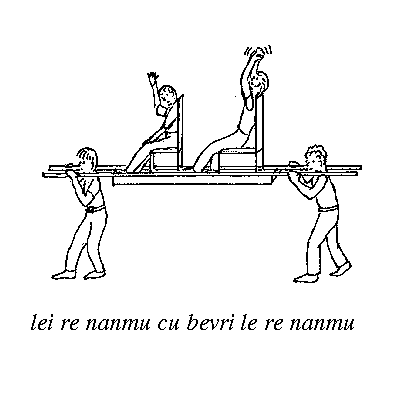If you understand anything about Lojban, you know what a sumti is by now, right? An argument, one of those things that fills the places of simple Lojban sentences like:
In Example 6.1, mi and le zarci are the sumti. It is easy to see that these two sumti are not of the same kind: mi is a pro-sumti (the Lojban analogue of a pronoun) referring to the speaker, whereas le zarci is a description which refers to something described as being a market.
There are five kinds of simple sumti provided by Lojban:
Here are a few examples of each kind of sumti:
| e'osai | ko | sarji | la | lojban. |
| [request] [!] | You [imperative] | support | that-named | Lojban. |
|
Please support Lojban! |
Example 6.2 exhibits ko, a pro-sumti; and la lojban., a name.
| mi | cusku | lu | e'osai | li'u | le | tcidu |
| I | express | [quote] | [request] [!] | [unquote] | to-the | reader. |
|
I express “Please!” to the reader. |
Example 6.3 exhibits mi, a pro-sumti; lu e'osai li'u, a quotation; and le tcidu, a description.
Example 6.4 exhibits ti, a pro-sumti; and li ci, a number.
Most of this chapter is about descriptions, as they have the most complicated syntax and usage. Some attention is also given to names, which are closely interwoven with descriptions. Pro-sumti, numbers, and quotations are described in more detail in Chapter 7, Chapter 18, and Chapter 19 respectively, so this chapter only gives summaries of their forms and uses. See Section 6.13 through Section 6.15 for these summaries.
